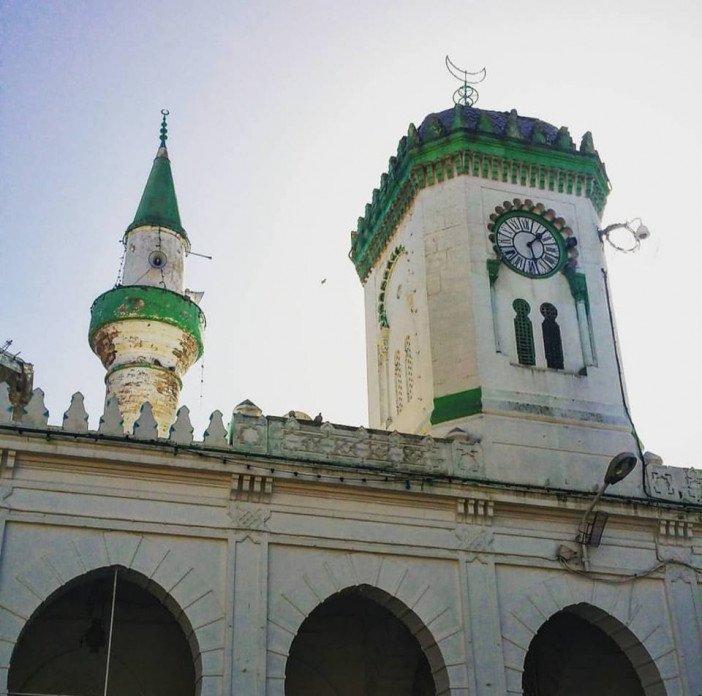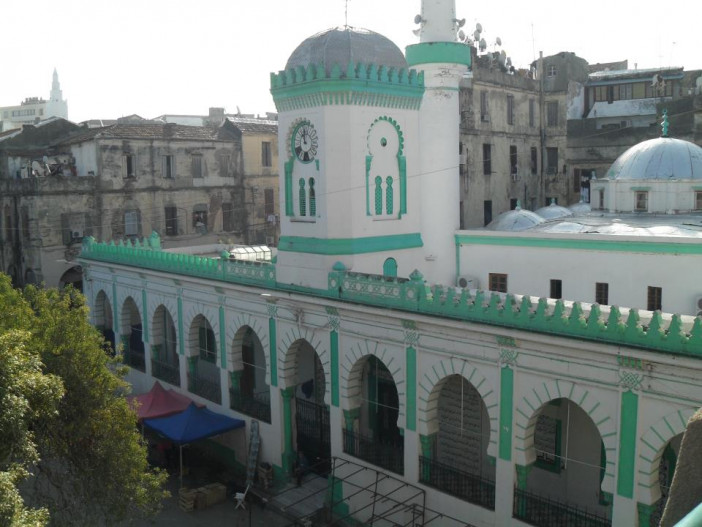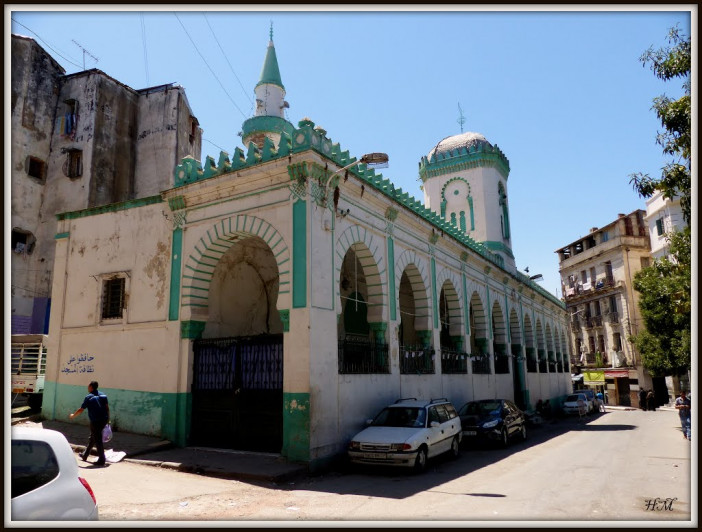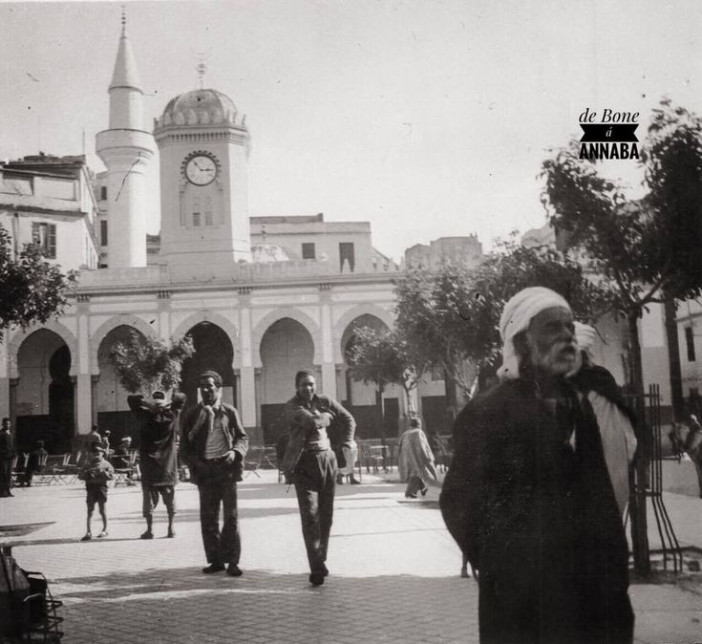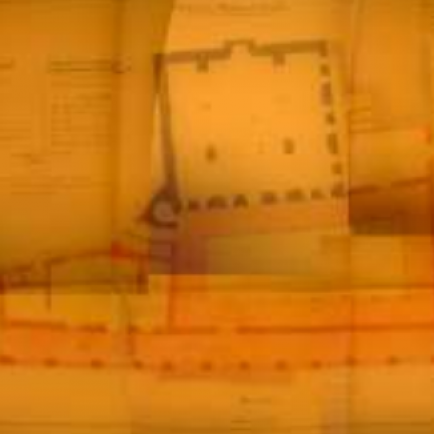Salah Bey Mosque
History
The Salah Bey Mosque is a mosque located in Annaba, Algeria. It was built between 17911 and 17922 by Salah Bey, the bey of Constantine.
Urban and Architectural
The Anatolian type plan and its proportions make this mosque an extremely original building of the Ottoman period. A courtyard precedes the mosque; an exterior portico added in 1852 precedes a main building, one of the rooms of which served as an audience hall and the other as a Koranic school. The prayer room is accessed by an entrance located in the axis of the mihrâb which opens onto a gallery delimiting on three sides a space in front of the mihrâb; divided into nine bays, the gallery is covered with domes: three identical side domes face each other, while to the west, the smaller bays delimit slightly elliptical domes. In the center, the space is covered with a horseshoe dome on pendentives, pierced by eight windows in a raised arch and a cornice; the whole was covered with polychrome drawings during the colonial period. This very rare plan for a mosque is found in Algiers in the Kafar mosque. It is the second mosque with a hemispherical dome with that of Ketchawa, in Algeria. The Bône mosque is also one of the few mosques with several side galleries and at the back of the courtyard without pillars.
Description
In the prayer hall alternate both pillars and columns, as in the mosques of Raqqa, Tinmal, the Qarawiyyîn of Fez.
The Salah Bey Mosque is distinguished by the variety of its capitals. The influence of ancient architecture is noticeable in the cruciform springs above the prismatic columns and the acanthus leaf capitals inspired by Roman composite capitals.
References
https://stringfixer.com/fr/Salah_Bey_Mosque
https://www.qantara-med.org/public/show_document.php?do_id=461
Details
Location
Annaba, Algérie
Worshippers
600
Owners
Salah Bey, le bey de Constantine.
Year of Build
1791-1792
Area
1200
Drawings
Map
History
The Salah Bey Mosque is a mosque located in Annaba, Algeria. It was built between 17911 and 17922 by Salah Bey, the bey of Constantine.
Urban and Architectural
The Anatolian type plan and its proportions make this mosque an extremely original building of the Ottoman period. A courtyard precedes the mosque; an exterior portico added in 1852 precedes a main building, one of the rooms of which served as an audience hall and the other as a Koranic school. The prayer room is accessed by an entrance located in the axis of the mihrâb which opens onto a gallery delimiting on three sides a space in front of the mihrâb; divided into nine bays, the gallery is covered with domes: three identical side domes face each other, while to the west, the smaller bays delimit slightly elliptical domes. In the center, the space is covered with a horseshoe dome on pendentives, pierced by eight windows in a raised arch and a cornice; the whole was covered with polychrome drawings during the colonial period. This very rare plan for a mosque is found in Algiers in the Kafar mosque. It is the second mosque with a hemispherical dome with that of Ketchawa, in Algeria. The Bône mosque is also one of the few mosques with several side galleries and at the back of the courtyard without pillars.
Description
In the prayer hall alternate both pillars and columns, as in the mosques of Raqqa, Tinmal, the Qarawiyyîn of Fez.
The Salah Bey Mosque is distinguished by the variety of its capitals. The influence of ancient architecture is noticeable in the cruciform springs above the prismatic columns and the acanthus leaf capitals inspired by Roman composite capitals.


